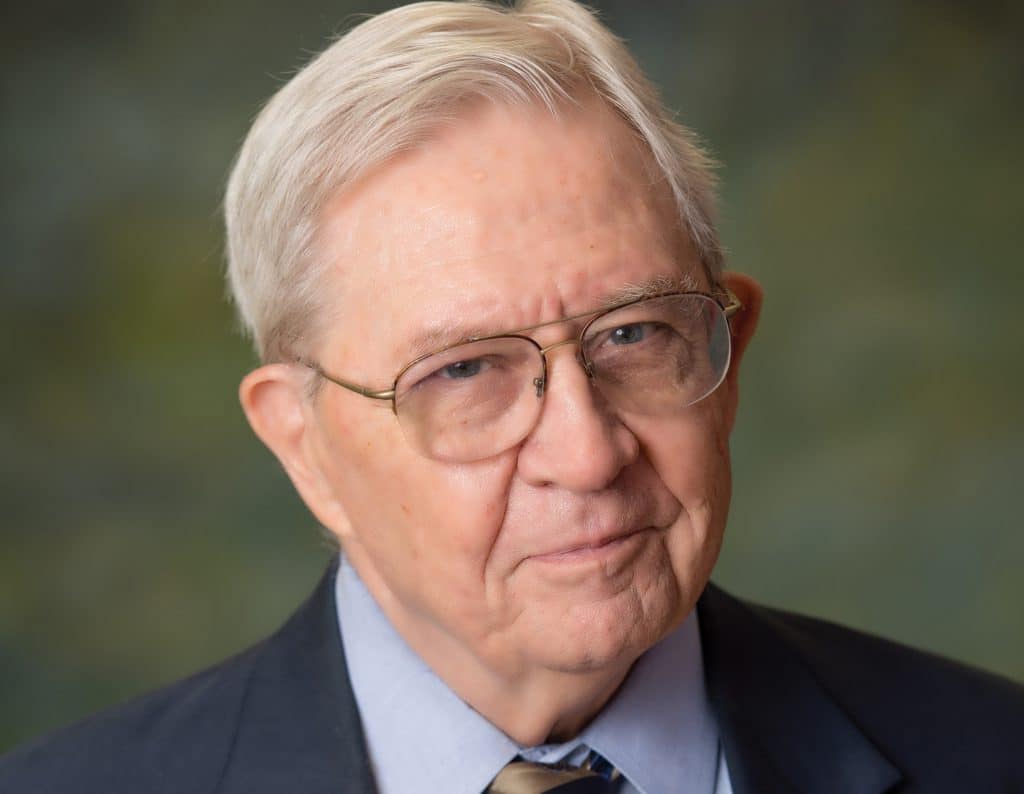Menu

Donald Ainslie Henderson was born in Lakewood, Ohio on September 7, 1928, of Scots-Canadian immigrant parents. Henderson was an American physician, educator, and epidemiologist who directed a 10-year international effort (1967–77) that eradicated smallpox throughout the world and launched international childhood vaccination programs. From 1977 to 1990, he was Dean of the Johns Hopkins School of Public Health. Later, he played a leading role in instigating national programs for public health preparedness and response following biological attacks and national disasters. At the time of his death, he was Professor and Dean Emeritus of the Johns Hopkins Bloomberg School of Public Health, and Professor of Medicine and Public Health at the University of Pittsburgh, as well as Distinguished Scholar at the UPMC Center for Health Security. [1]
Henderson served as Chief of the CDC virus disease surveillance programs from 1960 to 1965, working closely with the inspirational epidemiologist Dr. Alexander Langmuir. During this period, he and his unit developed a proposal for a United States Agency for International Development (USAID) program to eliminate smallpox and control measles during a 5-year period in 18 contiguous countries in western and central Africa.
The USAID initiative provided an important impetus to a World Health Organization (WHO) program to eradicate smallpox throughout the world within a 10-year period. In 1966, Henderson moved to Geneva to become director of the campaign. At that time, smallpox was occurring widely throughout Brazil and in 30 countries in Africa and South Asia. More than 10 million cases and 2 million deaths were occurring annually. Vaccination brought some control, but the key strategy was "surveillance-containment". This technique entailed rapid reporting of cases from all health units and prompt vaccination of household members and close contacts of confirmed cases. WHO staff and advisors from some 73 countries worked closely with national staff. The last case occurred in Somalia on October 26, 1977, only 10 years after the program began. Three years later, the World Health Assembly recommended that smallpox vaccination could cease. Smallpox is the first human disease ever to be eradicated. [1]
What seems such an obvious effort now, looking back, was far from obvious at the time. Eradicating the virus from the planet was not merely an epidemiological and microbiological activity. It was mainly about overcoming huge political resistance. At that level, public health might as well be called 'political health'.
On 15 August 1975, the Indian government hosted a lavish party. It had good reason to celebrate: not only was it marking 28 years of independence from British rule, but the prime minister, Indira Gandhi, had declared the date “Independence from Smallpox Day”. For decades, India was considered the endemic home of the disease, accounting for some 60% of globally reported cases. Yet in the space of just one year, infections had fallen from 188,000 to zero, thanks to a combination of disease surveillance, vaccination and publicity.
Yet as Donald Henderson left the celebrations in order to catch a flight to Bangladesh, he received word that the borders were closed. The Bangladeshi military had staged a coup; the president and his family were dead.
It was a pivotal moment in the global effort to eradicate smallpox, a disease that had until recently killed some 2 million people each year. To get this far, Henderson and his team had overcome political resistance, ineffective vaccine stocks, floods, famine and civil war.[2]
They had stopped cars in the streets of the former Yugoslavia to vaccinate people, and gone house to house in remote regions of India to nip outbreaks in the bud. Now, eight years into the campaign, Bangladesh was the final refuge for Variola major, the most infectious form of the virus, and the country was threatening to fall apart.
Fearing that a tide of refugees might trigger fresh outbreaks, or even reimport the disease to India, Henderson deployed large numbers of health workers to the border to step up surveillance, and vaccinate as required. Fortunately, the predicted influx never arrived. A few weeks later, the borders reopened and WHO’s teams went back to work. In November 1975, Bangladesh reported its final case of smallpox and, two years later, the world’s last case was identified in Ali Maow Maalin – a Somali cook from the port city of Merca. The world was finally declared smallpox-free in 1979.[2]
“If the Nobel prize in medicine was not so focused on basic science, Henderson and the smallpox team would surely have shared it,”
Chris Beyrer, , Desmond Tutu professor of public health and human rights at the Johns Hopkins Bloomberg School of Public Health in Baltimore
Donald Henderson died in Baltimore, USA, on August 19, 2016